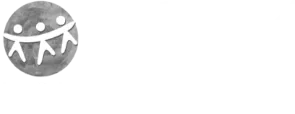The landscape of social impact is rapidly evolving, driven by the increasing complexity and interconnectedness of global challenges. Issues like climate change, poverty, and inequality demand collaborative and multifaceted solutions that transcend the limitations of traditional philanthropy. Data from the Global Impact Investing Network (GIIN) reveals a burgeoning impact investing market, reaching an estimated USD 1.164 trillion in assets under management as of 2022, signifying a growing appetite for investments that generate both financial returns and positive social and environmental impact. In this dynamic environment, capacity building for both implementing organisations and donors becomes essential. It serves as the fertile ground where sustainable solutions blossom, empowering organisations to navigate the complexities of the social sector and maximizing the impact of donor contributions.
Often, capacity building initiatives are taken on to deliver immediate results, such as engaging volunteers or securing short-term investments. While these actions are important, they represent just one piece of the puzzle. To truly empower Implementing organisations and donors, a deeper exploration into the unique needs, expectations, and challenges of each stakeholder is required. This approach includes building a foundation for long-term success alongside developing strategies that address the evolving demands of the social landscape.
Awareness Initiatives and Workshops: A Platform for Empowerment
Educational initiatives and workshops play a crucial role in capacity building. They provide a platform for open dialogue and knowledge exchange, allowing implementing organizations to articulate their on-the-ground realities and donors to gain a deeper insight into the complexities of the social sector. These interactions are vital to foster mutual understanding and trust, which are the bedrocks of effective collaboration.
By participating in these educational platforms, such as workshops, conferences, and online courses focused on innovative finance and impact investing, stakeholders can find common ground and identify areas where their interests align. These platforms provide opportunities for cross-sector dialogue, knowledge sharing, and exposure to best practices, fostering a deeper understanding of different perspectives and objectives. This shared understanding paves the way for more impactful collaborations and innovative solutions to emerge, ultimately leading to sustainable outcomes that benefit both implementing organisations and the communities they serve.
Measuring Impact: Beyond Numbers
While quantitative metrics are essential for tracking progress, the true impact of capacity building initiatives often transcends numbers. It assesses the long-term effects on capabilities and sustainability of Implementing organisations, as well as on the effectiveness of donor contributions.
Institutional outcomes like enhanced organisational efficiency, improved governance structures, and increased financial sustainability are vital indicators of success. However, the transformational impact on individuals within these organisations remains equally important. Assessing whether individuals have gained knowledge, confidence, and the ability to lead is crucial for understanding the full impact of capacity building efforts.
Leveraging Technology for Enhanced Capacity Building
In the modern era, technology plays a pivotal role in transforming the way organisations operate and collaborate. For non-profits and social enterprises, the integration of digital tools can significantly enhance their capacity building efforts.
1. Data Analytics: By harnessing the power of data analytics, Implementing organisations can gain insights into the effectiveness of their programs, identify patterns and trends, and make data-driven decisions that enhance their impact. Donors can also use analytics to monitor the outcomes of their investments and adjust their strategies accordingly.
2. Cloud Computing: Cloud-based solutions offer scalable options for data management and storage, which are essential for growing organisations. They facilitate easier access to information, enhancing collaboration and efficiency across teams and locations.
3. Mobile Platforms: With the widespread use of mobile devices, developing mobile-specific applications and tools can dramatically increase engagement and accessibility for stakeholders. This is particularly effective in reaching remote or underserved populations, expanding the reach and impact of capacity-building initiatives.
Building a Roadmap for the Future
As we navigate the complexities of the 21st century, it is clear that building capacity is a strategic imperative for Implementing organisations and donors alike. Below is a proposed roadmap for cultivating growth and ensuring sustainable impact:
1. Cultivating a Culture of Learning:
- Invest in educational initiatives and workshops: Create platforms for knowledge sharing, skill development, and cross-sector collaboration.
- Develop tailored learning programmes: Address the specific needs and challenges of different stakeholders within the social sector.
- Foster a culture of continuous learning: Encourage ongoing professional development and knowledge exchange within organisations.
2. Forging Strategic Partnerships:
- Break down silos between sectors: Facilitate collaboration between non-profit and for-profit entities to leverage their respective strengths.
- Build bridges with government and academic institutions: Tap into their expertise and resources to enhance the impact of capacity building initiatives.
- Create platforms for knowledge sharing and networking: Foster open communication and collaboration among diverse stakeholders.
3. Measuring and Adapting:
- Develop comprehensive evaluation frameworks: Go beyond quantitative metrics to assess the long-term institutional and transformational impact of capacity building efforts.
- Embrace a culture of feedback and learning: Regularly gather feedback from both Implementing organisations and donors to adapt and improve programmes.
- Share learnings and best practices: Disseminate knowledge gained from successful capacity building initiatives to benefit the wider social sector.
A Collaborative Force for Change: ISDM’s Global Knowledge Hub
In our journey towards a more impactful social sector, we are not alone. Organisations like the Indian School of Development Management (ISDM) and its Global Knowledge Hub play a crucial role in facilitating collaboration and knowledge exchange. Through research, publications, and events, the Hub connects diverse stakeholders, providing access to valuable resources and fostering a culture of continuous learning. This collective effort empowers individuals and organisations to navigate the complexities of the social sector and drives meaningful change.
To read the full report, click here.




